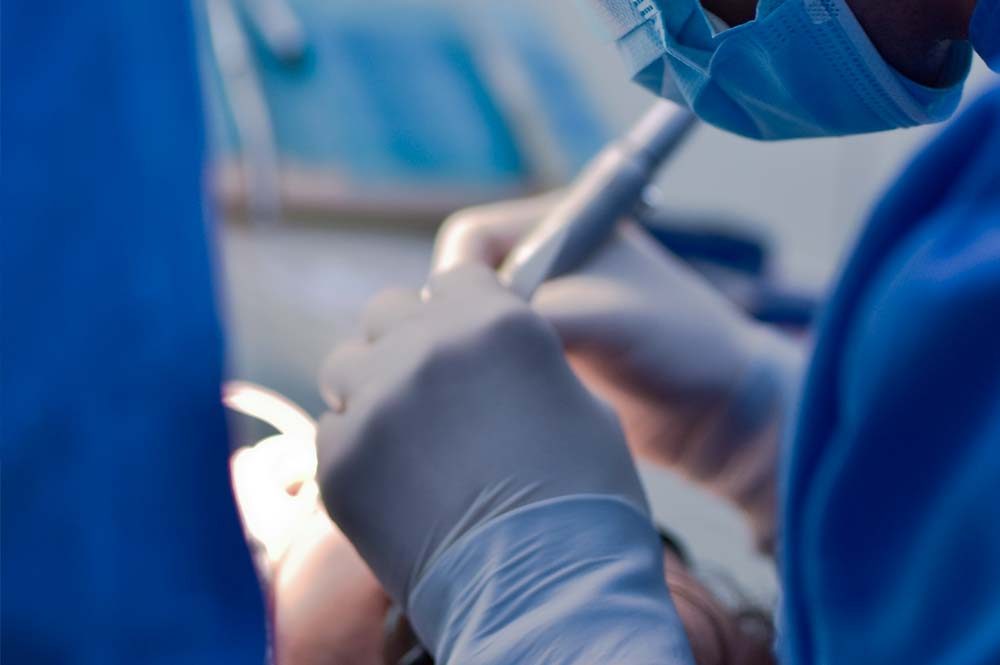Home » Bone Grafting

The upper and lower jaw bone that supports the teeth—known as alveolar bone—begins to resorb once a tooth is removed. This process begins immediately and progresses with time, sometimes to the point where dental implant placement is no longer feasible. In the most extreme cases, such as with edentulous patients (missing all of the teeth in the top jaw, bottom jaw, or both), resorption of the bone can be so extensive that dentures no longer fit without some sort of anchorage (i.e., dental implants).
A patient looking to have dental implants placed may then require some sort of bone grafting to be performed prior to, or at the same time as dental implant surgery. In the cases where a patient requires a tooth to be removed but knows that they would like to replace the tooth with a dental implant, an ‘alveolar ridge preservation’ graft may be performed at the time of the extraction. Such a bone graft significantly reduces the amount of bone resorption that occurs in the months following an extraction, and even builds additional bone to ensure the success of a future dental implant. An added benefit of this procedure is the new ‘attached gum tissue’ (also known as keratinized tissue) that forms across the grafted surface. An adequate amount of attached gum tissue around the exposed surface of a dental implant is critical to the long-term health of the implant.
The limitations to bone grafting in the upper and lower jaws are the adjacent vital structures, such as the mandibular (or lower jaw) nerves, and the maxillary (or upper jaw) sinuses. In the lower jaw, there may be insufficient bone overtop of the mandibular nerve, which may necessitate a nerve repositioning surgery with or without additional bone grafting. For the upper jaw, the maxillary sinuses may be expanded (or pneumatized), which reduces the amount of bone available for dental implant placement. A maxillary sinus augmentation (also known as a sinus lift) may be performed in this case, and this may be done at the time of implant placement or as a separate procedure depending on the bone available.
What type of anesthetic is used?
At your consultation visit, our surgeon will discuss the anesthetic options for your procedure. Many factors determine what type of anesthetic would be most suitable for your specific situation. These factors include your level of anxiety with dental procedures as well as the duration and complexity of your treatment. In all cases, local anesthesia is used but, in addition to that, patients may have their treatment performed under light sedation, deep sedation, or general anesthesia. Ensuring a comfortable experience for our patients is our top priority, and our surgeon will guide you through the process of determining the anesthetic type that is right for you.
Our surgeon at Oxford OMS Centre is ready to help you achieve your goal of replacing a tooth (or teeth) even if you currently have insufficient bone.
© Copyright Dr. Matthew D. Morrison, Oxford Oral & Maxillofacial Surgery Centre | Dental Website Design by Platinum Design